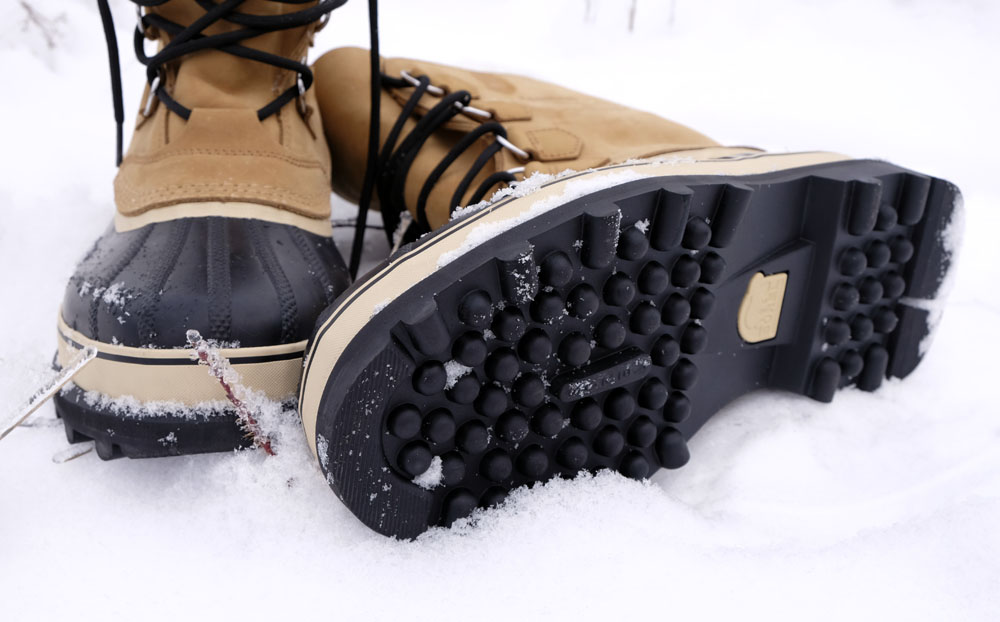Traction of the Boot Sole
Have you ever stepped out of your house on a snowy day and stressed about every step you take wondering if your neighbours are going to get the glory of seeing you slip on the way to the bus once again? Avoid having to leave the house a half hour earlier just to prevent any faulty steps while navigating the icy, city sidewalks and lace-up yourself a sturdy, tacky pair of winter boots.
On the sole of the shoes, there is also a white lug which is the thermochromatic lug. This particular piece will change from white to blue when the temperatures drop below 0°C.
Rubber soles are often chosen for winter boots due to the material’s waterproof properties making them ideal for snow, slush, puddles and any other wet, winter weather that may come your way.
Other common winter boot soles include lugs which are generally made of rubber also and have deep indentations allowing for better traction on the ground
On the sole of the shoes, there is also a white lug which is the thermochromatic lug. This particular piece will change from white to blue when the temperatures drop below 0°C.
Rubber soles are often chosen for winter boots due to the material’s waterproof properties making them ideal for snow, slush, puddles and any other wet, winter weather that may come your way.
Other common winter boot soles include lugs which are generally made of rubber also and have deep indentations allowing for better traction on the ground




Comments
Post a Comment